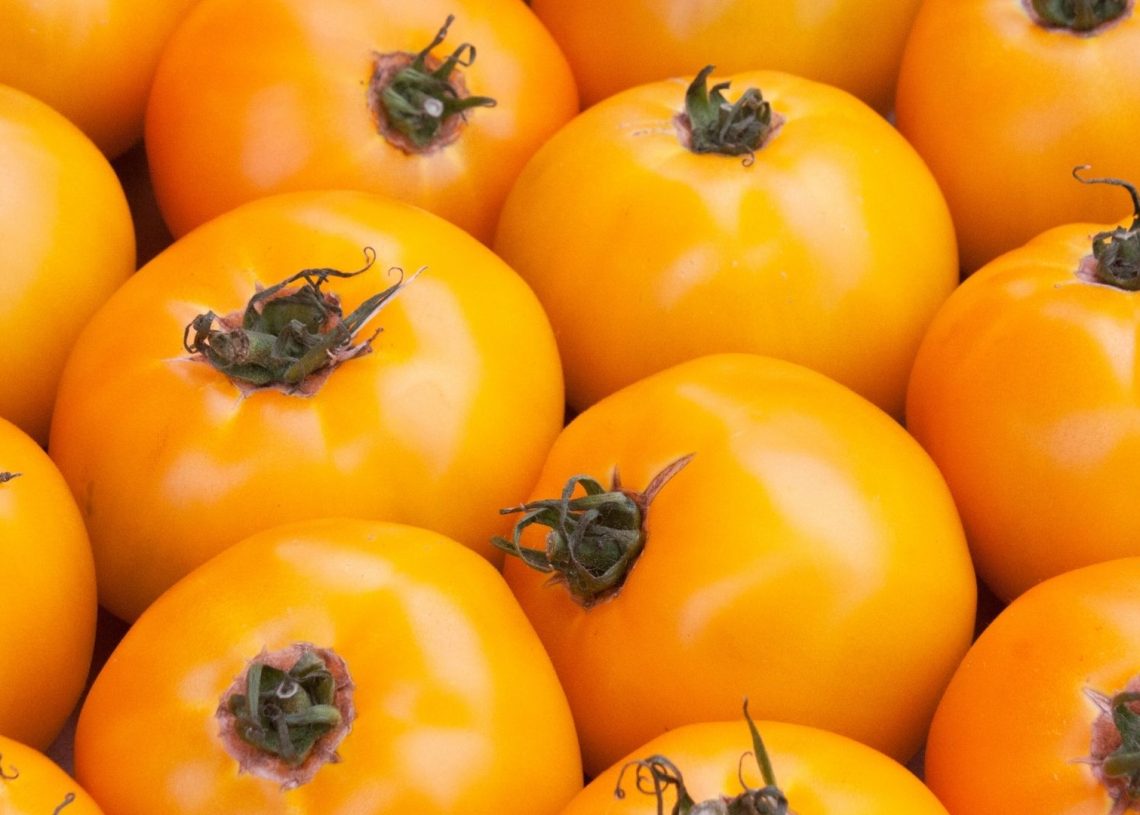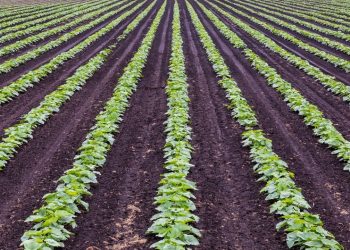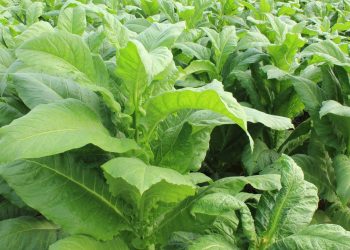When it comes to home gardening, people consider Tomatoes as their go-to option. Yet, only a few know that these are also one of the most difficult to grow. As you plan to grow tomatoes in your garden, you may have to combat issues like tomatoes yellowing or forming of yellow leaves on tomato plants.
Besides, these plants attract a lot of pests and diseases, and their nutritional needs are substantial, which is why people sometimes call them “heavy eaters”. On the other side, tomatoes yellowing can indicate various issues, ranging from nitrogen shortage to overwatering to herbicide damage. That said, you don’t need to worry much as yellow leaves are quite frequent, and you can avoid their occurrence by taking few simple precautions.
Don’t feel too concerned if the foliage on your freshly acquired tomatoes is yellow, especially if they were long and lean plants flourishing in a tiny pot before planting them in your kitchen garden. Some nursery-grown vegetable plants develop yellow growth due to competition from nearby plants or declining nitrogen levels in the potting mix.
Key Reasons for Yellow Leaves on Tomato Plants
There are several reasons for tomato plant leaves turning yellow, and the majority of them are simple to fix. The most prevalent reasons for tomatoes yellowing are listed here, along with their respective solutions.
Fungal Infections
Fungi frequently causes yellow tomato leaves. Early blight, for example, is characterized by yellow leaves and tiny spots or lesions that get bigger over time, finally resembling a bulls-eye. Unless the infection is severe, you won’t find any visible harm to your crop.
On the other hand, late blight is a more problematic disease that begins on the top leaves and progresses downward. Massive, greasy lesions identify late blight on both leaves and stems. Fusarium wilt produces yellow tomato leaves on one side of the plant, usually starting with the older bottom leaves, and they often appear in warm weather.
The plant’s growth is limited, and it is unlikely to bear fruit. You can use fungicide with chlorothalonil to treat this and other fungal infections. Besides, water the plant in the right manner. Make plenty of space between plants to allow adequate air circulation and trim heavy growth in critical situations.
Virus Infections
Tomatoes yellowing also may happen due to certain virus infections like Tomato mosaic virus, single streak virus, tobacco mosaic virus, cucumber mosaic virus, and tomato yellow leaf curl. You can easily identify these Tomato viruses by checking for slow growth and an uncanny mosaic pattern on the leaves. That said, symptoms vary in other situations.
Some kinds can generate fern leaf, mushroom kind growth, dark patterns, or severe curling. Pests like whitefly, thrips, and aphids may propagate viral infections. Still, you can transfer them by tools or hands. Viruses may be destructive to plants, and they may not survive. Regrettably, there are no pest controls in place for such situations.
Often, the best option is to toss out the sick tomato plant and start over in a new part of your garden with disease-resistant cultivars. As you do that, try maintaining appropriate watering and pest control during the process.
Pests and Insects
A variety of pests may wreak havoc on plants, leaving yellow tomato leaves as a result. Using several pesticide soaps or horticultural oil, you can combat small pests like Aphids, Spider mites, Thrips, Whiteflies and Flea beetles.
Moreover, you can manually remove Larger tomato pests, such as hornworms and cutworms or kill them using Bt treatments (Bacillus thuringiensis).
Watering Issues
Yellow tomato leaves may also occur due to too much or too little watering. Based on the climate and soil composition, soak tomato plants thoroughly once every five to seven days. Let the soil be moisture-free between waterings and avoid letting it become damp. You also need to water Tomato plants carefully at the base and keep the leaves dry as much as possible. Also, it is advisable to water the tomato plant early in the day.
Nutritional Deficiencies
You typically have little to fret over if you just notice several yellow tomato leaves towards the bottom end of the plant. This usually indicates that the leaves aren’t receiving sufficient soil nutrients or aren’t absorbing sufficient sunlight. This most commonly happens on older, fruit-bearing plants.
It might be as simple as a nitrogen deficiency in your soil. If this is the case, do a soil test to establish the nitrogen level and discover which nutrients, if any, are deficient so you may fix them accordingly. Because tomatoes have a voracious appetite, feed them at planting time and weekly during the season. Simply follow the instructions and avoid overfeeding, resulting in lush plants at the price of fruit.
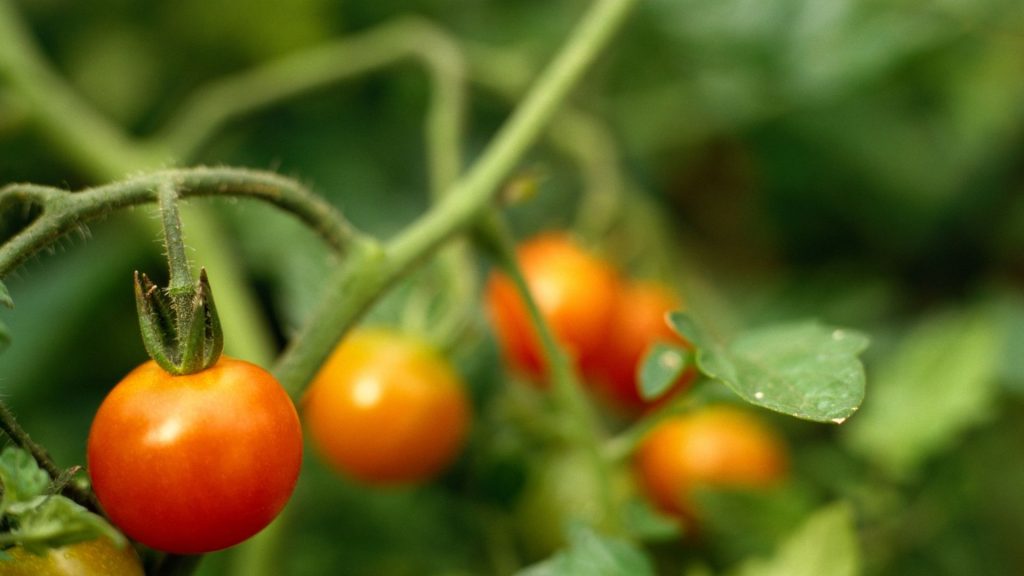
Why Must you Pick only the Healthy Tomato Plants?
Yellow leaves on tomato plants may signify various health problems, such as viral plant infections. Look for healthy plants with stocky growth and green leaves that are free of spots or fading when buying tomato plants from a local nursery or gardener. Unhealthy cheap plants may bring pests and infections to the garden that might take some good time to eradicate.
A shortage of nutrients in the soil is the most prevalent cause of yellowing leaves on established tomato plants. Tomatoes are heavy feeders that require a lot of nutrients to develop well and produce fruit.
The tomato plant typically shows signs of nutritional deficiency at a young age. Deficiency of nitrogen is the most common cause of leaves or tomatoes yellowing, yet it’s critical to identify this aspect before opting for a high-nitrogen fertilizer. Few of the nutrients can cause a deficit in others if there is an abundance of them. To find out the nutrients required by the tomato plant, look for yellow leaves on tomato plants and which portions of the leaves are yellowing. Afterwards, conduct a fast soil test to check on the nutrients that plants may require.
What Triggers the Yellowing of Tomatoes?
The older tomato leaves on the lower branches will exhibit signs of certain nutritional deficiencies. This process confirms that the tomato can transfer nutrients from older leaves to young leaves that require those minerals in urgency. As a result of this process, the older tomato leaves may turn pale.
The older leaf will be yellow if there is a nitrogen deficiency. Although tomatoes, like other plants, require nitrogen to thrive, it’s critical not to overuse nitrogen fertilizer. A surplus of nitrogen encourages luxuriant vegetative development at the expense of flower and fruit output.
The outer edge of the leaf will yellow before becoming brown and will seem burnt due to a potassium deficiency. The quality of fruit and yield here depends on a good amount of potassium, which you can infuse with fertilizer or may be available naturally in the soil already.
Tomatoes with insufficient magnesium produce yellow leaves on tomato plants with green veins. If you’re certain your plant is deficient in magnesium, try a DIY Epsom salt solution. Spray the plant with a combination of two teaspoons of Epsom salt mixed in 2 litres of water. The leaves should begin to turn green within a week of this treatment, if the issue was genuinely related to magnesium deficiency.
Why you may see Tomato Plant Leaves turning yellow on the edges?
Just in case you witness yellowing of the outer edge of these tomato leaves, potassium deficiency may be the root cause. In plants, not all nutrients are transportable. Fresh growth at the edges of branches and to the topmost part of the plant will show signs of nutritional deficiency. That said, younger leaves might become yellow due to a lack of calcium and iron.
Calcium shortage can cause yellow leaves as well as bloom end rot, which causes big brown or black patches on the lower parts of tomato fruits.
Remedies for Leaves of Tomatoes Yellowing
Soil testing prior to fertilizing
Perform a quick soil test before opting for the fertilizer. The findings of the test would incorporate the data about the present nutrients in the soil, soil’s pH level, and suggestions regarding further applications. You also must include nutrients that cause yellow foliage in most fertilizers designed particularly for tomatoes or vegetable gardens.
The pH level is significant because it affects the availability of nutrients. Tomato plants may witness difficulty captivating calcium and magnesium in case the soil is excessively acidic. As a matter of fact, acidic soil restricts the iron quantity that plants may take. Besides, tomatoes thrive on soil with a pH of 6.5.
Protection from pests
Tomatoes are vulnerable to a variety of diseases and pests that may induce yellowing of the leaves. If you believe your tomato plant is infected with a fungal infection, or that insects or mites attack it, contact your local agricultural extension agent for assistance in identifying the issue and finding a cure.
These agencies may include information regarding tomato health issues that are prevalent in your region. The Home & Garden Information Center at Clemson University, for example, has a whole website devoted to tomato illnesses and problems.
Proper Watering
Plants receive food and water through their roots. Water transports this essential nutrition into the plant, delivering them to its most critical region. This implies that even in good soil, in case the tomatoes aren’t getting the required water, plants may exhibit indications of nutritional shortage. Tomatoes require roughly an inch of water per week throughout the growth term and two inches per week after ripening begins.
Water thoroughly twice a week (subject to weather), enabling water to penetrate approximately a foot into the soil, rather than a small amount every day. Simply water the tomato plant through its base with a watering stick pipe accessory or a watering bucket. When water starts to roll away, take a moment to let it soak into the soil completely. Give the plant some more water when there’s no more standing water around it. Alternatively, you can use a soaker hose to supply water at a slow rate.
Watering tomato roots deeply and infrequently is an excellent technique to encourage them to develop deep into the soil. Plants will be more resistant to stress as a result of this approach, and the broad root system will have an easier time obtaining nutrients in the soil. When it comes to watering tomatoes, consistency is important, especially as the fruit develops. Over and under-watering can cause fruits to split open or develop blossom end rot.
Fertilizer Burn Prevention
When it comes to fertilizing your plants, make sure to follow the recommendations on the package. This will guarantee that your plants get the nutrients they require while minimizing fertilizer runoff and crop loss. If the fertilizer label specifies “sidedressing,” it implies the fertilizer must be put beside the plants rather than directly on them — generally 4 to 6 inches apart.
Fertilizers are a perfect example of how too much of a good thing can really cause difficulties. Tomato roots may burn if you use more fertilizer than the label recommends (perhaps too much at once or too regularly). Fertilizers as well as other ions in the water can accumulate in tomato pots, causing salt damage or fertilizer burn. To wash away surplus salts, ensure proper watering until water drips from the pores at the bottom of the pot.
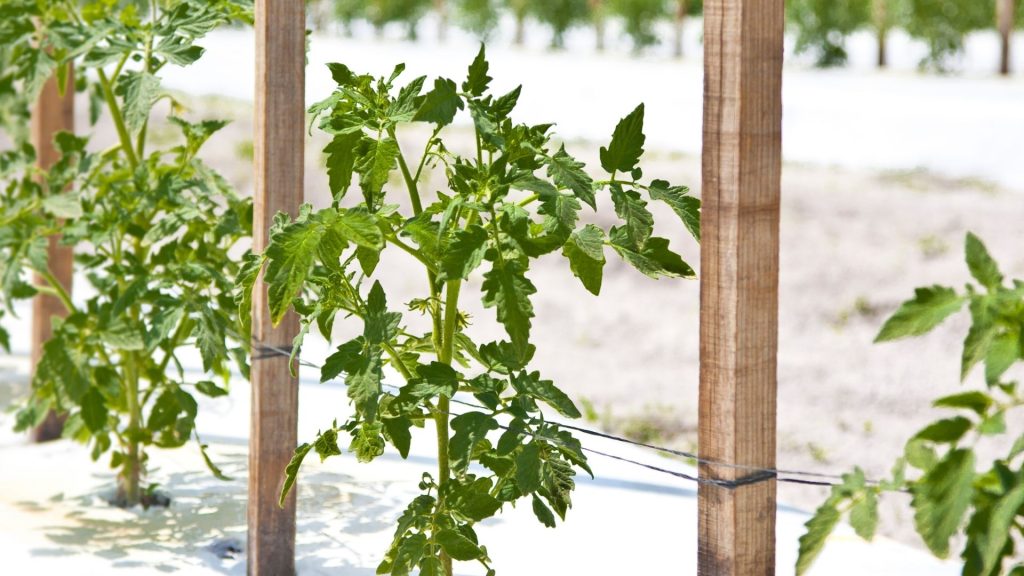
Herbicides should be avoided.
Weed control is a never-ending task for tomato plant gardeners everywhere. While it might be enticing to use a herbicide (whether synthetic, organic, or homemade), take into consideration that tomatoes are extremely susceptible to chemical weed management. Herbicide dispersion can harm tomatoes even if herbicides aren’t sprayed directly to them, leading to restricted yellow development. Hand-picking, composting and planting crops closely enough to reduce weed competition are all alternatives to using pesticides to control weeds in the vegetable garden.
Keep an eye out for sunscald.
When the weather is inappropriate, tomato leaves can get sunburned. Early in the season, sunscald is frequent on newly planted tomatoes, particularly if the seedlings have been grown inside under a grow lamp. Before putting out into the yard, “hardening off” is vital to acclimatize plant seedlings.
Start the procedure of drying off your tomatoes approximately two weeks before you want to put them in the garden. Set potted seedlings in a shaded area outside during the day and bring them inside at night. Wait until the weather improves before continuing to harden off if the temperature drops below 45 degrees Fahrenheit.
If you’re getting your tomato seedlings from a nursery, make sure they’re protected from sunscald on the way home. Avoid keeping plants in the vehicle for long durations, and make the plant nursery your final visit before returning home. If at all possible, keep tomato leaves away from the vehicle window.
Sunburn can also occur on older, rooted plants, particularly as summer months become hotter. Tomatoes growing on exposed west- and south-facing locations, or near a reflecting surface such as a block wall, may benefit from some shade cloth protection.
Don’t overdo it with organic matter.
Another cultural issue that causes tomatoes yellowing or leaves to turn yellow is the use of far too many organic materials as soil additions, such as leaves or sawdust. The excess of carbonaceous material in these situations might deplete the nitrogen from the soil, which could be nourishing your tomato plants. It’s especially bothersome if the supplements aren’t well absorbed into the garden, so when applying organic material to your soil, pay attention to proportions and correct blending.
FAQs Regarding Yellow Leaves on Tomato Plants
Q. Is it Necessary to Remove Yellow Leaves from Tomato Plants?
Lower leaves that begin to turn yellow indicate that they are closing down and must be plucked before becoming a sugar waste on the remainder of the plant. Plants are photosynthesizing and generating sugar for crop yield as long as they are fresh.
Q. What Triggers the Occurrence of Tomatoes Yellowing?
Excessive amount of water can cause yellow tomato leaves. Based on the climate and soil composition, water tomato plants vigorously twice every 7 days. You should water tomato plants gently at the bottom, and the top should be kept as dry as possible. It is preferable to feed earlier in the day.
Q. Is it true that Coffee Grounds are Beneficial to Tomato Plants?
Coffee grounds incorporate about 2% nitrogen and varying quantities of phosphorus and potassium, all of which are important micronutrients for tomato plant development. These minerals will be released into the soil when the grounds degrade, making them accessible to the plant.
Q. What are the Symptoms that your Tomato Plants have been Overwatered?
Crushed fruit and sores or lumps on the leaf tips are early symptoms of moisture stress in tomato plants. The lumps or sores on the leaves will become corky if the overwatering persists. However, the roots submerge, die, and decay, reducing the water available to the plant’s leaf buds.
Conclusion
As the tomato plant grows its real leaves, the first leaves may change colour and fall off. Besides, It’s quite natural if the only visible yellow leaves on tomato plants are the cotyledons. Yet, just in case the situation gets worse, you can try out the remedies mentioned above.

